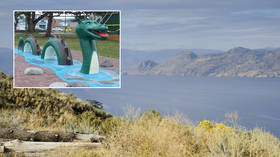Archeologists discover 3,000-yr-old ‘golden city of Luxor’ in Egypt in one of the biggest finds since King Tut’s tomb (PHOTOS)
A group of archeologists has unearthed the remains of a sprawling ancient city near Luxor, Egypt, in what has been hailed as one of the most important discoveries in the past hundred years.
The city, which dates back to King Amenhotep III, who ruled Egypt between 1391 BC and 1353 BC, was once the largest administrative and industrial settlement in the ancient empire, lead archaeologist Zahi Hawass said in a statement.
The site was dubbed the “Lost Golden City of Luxor” and is believed to be one of the largest ancient sites of its kind discovered in Egypt.
The ruins boast intact city streets flanked by houses with walls up to 10 feet high. Archaeologists also discovered rooms filled with tools of daily life, left by the city’s former inhabitants “as if it were yesterday,” the statement said. Rings, colored pottery vessels, casting molds to make amulets, pots used to carry meat, and various types of tools were unearthed during the excavation. A large bakery “complete with ovens and storage pottery” was also discovered.
Photographs show the ruins of ancient homes, as well as a range of pottery, artifacts and human remains dug up by archaeologists.
Described as an Egyptian Pompeii due to how well preserved it is, the city has caused considerable excitement among leading experts.
Betsy Bryan, professor of Egyptology at Johns Hopkins University, said it was one of the biggest finds since the discovery of the tomb of Tutankhamun in 1922.
Excavation, which began in September, only unearthed the southern part of the city, with the northern region still left to be explored. Archaeologists say that there is also a cemetery and an area with tombs that has yet to be revealed.
Like this story? Share it with a friend!














